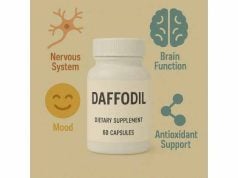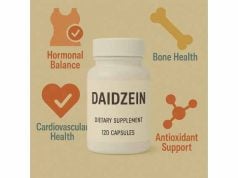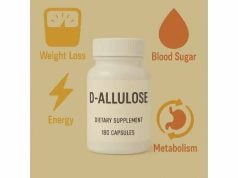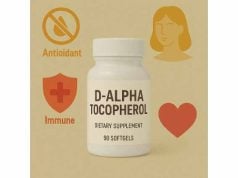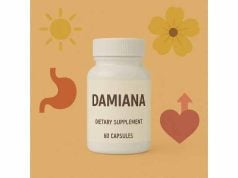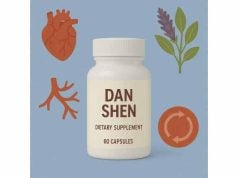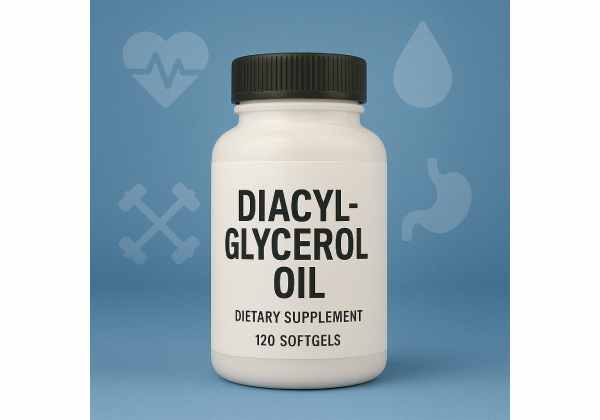
Diacylglycerol (DAG) oil is a specialty cooking oil formulated to contain a high proportion of diacylglycerols rather than the triacylglycerols (TAGs) found in conventional oils. That structural difference matters: DAG is handled a bit differently during digestion and post-meal lipid metabolism, which is why researchers have studied it for visceral fat, body weight, and triglycerides. In everyday terms, DAG oil can be used like canola or safflower oil in home cooking while potentially offering small advantages for fat oxidation and postprandial lipids when it replaces regular oils in the diet. It is not a shortcut or “fat blocker,” and results depend on the whole diet and lifestyle. Below, you’ll find a practical, evidence-based guide to what DAG oil is, where it may help, how to use it, how much to consider, and who should avoid it.
Essential Insights for Diacylglycerol Oil Users
- Replacing usual oil with DAG oil may modestly reduce visceral fat and post-meal triglycerides over 8–24 weeks.
- Typical studied intakes range from 2.5–40 g/day when DAG replaces regular cooking oil.
- Choose reputable brands that control processing contaminants like glycidyl esters and 3-MCPD esters.
- Avoid if you have fat-restricted diets due to pancreatitis, malabsorption, or are managing infant nutrition.
Table of Contents
- What is diacylglycerol oil and how it works
- Does DAG oil really help with fat and triglycerides?
- How to use DAG oil in everyday meals
- How much DAG oil per day?
- Side effects, interactions, and who should avoid it
- Evidence at a glance: what studies show
What is diacylglycerol oil and how it works
Diacylglycerols are natural components in edible oils, but in conventional oils they occur in small amounts. DAG oil is produced by increasing the diacylglycerol fraction (often to ≥80%) using enzymatic or interesterification techniques. The end result cooks and tastes like regular liquid vegetable oil yet has a different distribution of glycerol-bound fatty acids: two fatty acids on the glycerol backbone (DAG) instead of three (TAG).
Why this matters physiologically comes down to digestion and trafficking of fats after a meal. In the small intestine, TAG is largely broken down and reassembled into chylomicrons for transport and storage. DAG follows overlapping but not identical steps: 1,3-DAG in particular is less efficiently re-esterified back to TAG in enterocytes and may favor oxidation over storage. In controlled feeding studies, DAG-rich meals have produced lower postprandial triglyceride excursions than TAG-rich meals with the same fatty acid composition. Over weeks to months, replacing usual cooking oil with DAG has, in several trials, produced modest reductions in visceral adipose tissue and small improvements in fasting triglycerides in some populations.
It’s important to set expectations. DAG oil is not a weight-loss drug; it’s a food oil. Its potential benefits show up when it replaces, not adds to, existing oil in meals and when total calorie balance is reasonable. Effects also depend on the fatty acids attached to the glycerol. For example, DAG formulated with alpha-linolenic acid (ALA) behaves differently than DAG made mainly from oleic or linoleic acids. In studies where ALA-DAG replaced an ALA-TAG control, the DAG structure itself appeared to enhance reductions in visceral fat and fasting triglycerides beyond what the fatty acid alone would explain.
From a culinary standpoint, DAG oil generally behaves like a neutral, light-tasting oil suitable for salad dressings, sautéing, baking, and pan frying. Smoke point and oxidative stability are driven by the underlying fatty acid profile (e.g., more polyunsaturates usually mean lower thermal stability), so choose a DAG oil whose base oil matches your kitchen needs (e.g., high-oleic for higher-heat uses). As with any refined edible oil, quality control during deodorization is crucial because high heat can create process-related contaminants; reputable brands actively mitigate these and provide testing data.
Bottom line: DAG oil is best understood as a like-for-like swap for everyday oil that may confer small metabolic advantages over time, especially for people managing triglycerides or central adiposity, provided the rest of the diet is aligned with those goals.
Does DAG oil really help with fat and triglycerides?
The short answer is: it can, modestly, when used to replace conventional oil. Multiple randomized trials and longer real-world interventions have examined DAG oil in overweight or dyslipidemic adults. A recurring finding is a small but meaningful edge for DAG in reducing visceral fat and improving postprandial triglycerides, with variable effects on fasting lipids.
Weight and body composition: In a 24-week outpatient study in overweight adults consuming a reduced-energy diet, participants whose foods were prepared with DAG oil achieved a larger average reduction in body weight and total fat mass than those consuming isocaloric foods with TAG oil. The differences were modest in absolute terms but statistically significant, suggesting that DAG can “nudge” outcomes when calories are controlled. In another trial in overweight adults, daily DAG intake (with matched fatty acid content) reduced regional adiposity (trunk and abdominal fat depots) over a short four-week phase compared with the TAG control. Not every study shows a large scale change; rather, DAG tends to tilt results in a favorable direction.
Visceral fat: A 12-week, double-blind trial using ALA-enriched DAG (versus matched ALA-TAG) reported a greater reduction in visceral fat area and a small decrease in BMI in the DAG group. The DAG structure appeared to enhance metabolic responses to ALA itself, pointing to a synergy between the backbone (DAG) and the fatty acid profile (e.g., omega-3 ALA).
Triglycerides and postprandial lipemia: Acute and repeated-meal studies show that DAG-rich meals can blunt the rise in postprandial triglycerides compared with TAG meals containing the same fatty acids. Over weeks, some trials report reductions in fasting triglycerides when DAG replaces usual oil. Improvements in remnant lipoprotein markers have also been described, although the magnitude varies with dose, duration, and baseline lipids.
Glycemia and insulin action: Evidence for glucose control is mixed. Some studies note small improvements in insulin sensitivity indices when DAG replaces TAG, especially in the context of weight loss. Others show no significant difference. Because DAG is still a fat, glycemic effects are indirect (via weight and lipid changes), not comparable to glucose-lowering medications.
Who benefits most? People with central adiposity, mild hypertriglyceridemia, or diets high in refined oils may see the clearest signal when substituting DAG for their usual oil. Those already following a Mediterranean-style pattern with limited added oils may notice little change.
What it won’t do: DAG oil won’t compensate for a calorie surplus, a very high saturated fat intake, or low physical activity. It isn’t a therapy for severe hypertriglyceridemia or pancreatitis, conditions that require medical management and often fat restriction.
Takeaway: Expect modest, incremental benefits—think of DAG oil as a small lever that works best alongside dietary pattern changes (more fiber and protein, fewer refined sugars), adequate sleep, and regular activity.
How to use DAG oil in everyday meals
DAG oil is a culinary substitute, not a supplement capsule. The simplest approach is to replace your current liquid cooking oil one-for-one in dishes you already make. Because performance depends on the underlying fatty acids, pick a DAG oil with a base you recognize (e.g., canola-based DAG for neutral flavor and moderate-high heat; high-oleic sunflower DAG for sautéing; blends with more polyunsaturates for dressings).
Practical ways to incorporate it:
- Salads and cold dishes: Whisk DAG oil with vinegar, lemon, mustard, herbs, and a pinch of salt for a quick vinaigrette. If you value omega-3s, choose a formulation enriched in ALA and keep it for cold uses to preserve delicate fatty acids.
- Sautéing and stir-fries: Use DAG oil for vegetables, eggs, tofu, or lean meats. Keep heat moderate and avoid repeated re-use of oil to limit oxidation and the accumulation of heat-induced contaminants.
- Baking and roasting: DAG oil can replace neutral oils in quick breads, muffins, and sheet-pan roasts. Start with a one-to-one swap by volume.
- Marinades and dips: Combine DAG oil with citrus, yogurt, or spices to create flavorful, lower-saturated-fat marinades and dips.
Smart pairing for metabolic goals:
- Add viscous fiber (oats, beans, chia) to meals that include DAG oil; fiber slows lipid absorption and supports satiety.
- Include lean protein to improve fullness and support body composition during weight management.
- Favor unsaturated fats overall. DAG oil formulated with higher oleic or ALA content aligns well with heart-healthy patterns.
- Keep portions realistic. As with any oil, DAG is energy-dense (~9 kcal/g).
Storage and handling:
- Store tightly capped, away from light and heat. Use within the “best by” window.
- For high-polyunsaturated DAG oils, refrigerate after opening if the label recommends it.
- Avoid deep-fat frying cycles and repeated heating, which degrade any edible oil and can increase undesirable compounds.
Quality cues:
- Look for brands that disclose DAG content (e.g., “≥80% DAG”), specify the base oil(s), and publish testing data on processing contaminants (glycidyl esters and 3-MCPD esters).
- Prefer fresh stock from retailers with quick turnover. Rancid notes (painty, cardboard) signal oxidation—discard.
Meal ideas to try this week:
- Mediterranean bean salad: Canned chickpeas, chopped cucumber and tomatoes, parsley, lemon, and DAG vinaigrette.
- Sheet-pan salmon and broccoli: Toss broccoli florets with DAG oil, roast, then add salmon brushed with a little more oil plus herbs; finish with lemon.
- Whole-grain toast with avocado: Mash avocado with lime and a drizzle of DAG oil; top with pumpkin seeds.
- Tofu stir-fry: Quick sauté in DAG oil with ginger, garlic, and mixed vegetables; serve over brown rice.
The goal is consistency: small daily swaps add up over months.
How much DAG oil per day?
There isn’t a “one correct” dose because DAG oil is a food, not a drug. In clinical studies, effective intakes span a fairly wide range, always as a replacement for other oils:
- Lower range (2.5–5 g/day): Trials using ALA-enriched DAG at ~2.5 g/day have shown favorable changes in visceral fat and fasting triglycerides compared with matched ALA-TAG over 12 weeks when diet and activity were stable. This is roughly half a teaspoon to one teaspoon daily.
- Moderate range (10–20 g/day): Many free-living weight and lipid studies use amounts in this range, spread across meals as cooking oil or dressing. Ten grams is about 2 teaspoons; twenty grams is ~1.5 tablespoons.
- Upper range (up to ~40 g/day): Shorter studies have used ~40 g/day (just under 3 tablespoons) under supervision to probe body composition effects. That is a lot of added fat for most households and only makes sense if total calories are controlled and saturated fats are minimized elsewhere.
How to choose your target:
- Start with what you already use. If your household uses ~1–2 tablespoons of oil per day across cooking and dressings, replacing that with DAG oil keeps calories steady while testing its potential edge.
- Match your goals. For triglyceride management, spreading DAG oil across main meals (breakfast, lunch, dinner) that contain carbohydrates and fats may better blunt post-meal lipemia than one large bolus.
- Consider fatty acid profile. If you want a plant omega-3 bump, choose an ALA-enriched DAG for cold uses. For higher-heat cooking, pick a high-oleic DAG formulation.
Usage rules of thumb:
- Replace, don’t add. Keep total dietary fat within your plan. An extra tablespoon of any oil can exceed 100 kcal.
- Be consistent for 8–12 weeks. That’s the timeframe where small shifts in fat distribution and fasting triglycerides are typically measured.
- Monitor outcomes you care about. Track waist or visceral fat by consistent measurements, fasting lipid panels, and how you feel after meals.
Upper limits and safety:
- DAG oil has been evaluated for generally recognized as safe (GRAS) status for typical culinary uses. That said, very high intakes of any oil can drive weight gain if calories are not balanced.
- People advised to follow fat-restricted diets (e.g., pancreatitis, certain malabsorption syndromes) should not increase oil intake and should follow clinical guidance.
- For infants and very young children, consider that refined oils can contain trace processing contaminants; specialized infant formulas and pediatric guidance should take precedence.
In summary, a practical daily target for most adults is 10–20 g/day as a straight substitution for the oil you already cook with, adjusted up or down based on your total calorie plan and cooking pattern.
Side effects, interactions, and who should avoid it
Most trials report that DAG oil is well tolerated when it replaces other culinary oils. Adverse events are similar to those seen with standard vegetable oils: occasional mild gastrointestinal symptoms in sensitive individuals when fat intake increases quickly, and, rarely, oil-related reflux if large amounts are taken at once.
Key safety considerations:
- Processing contaminants: Like other refined oils, DAG oils can contain glycidyl fatty acid esters (GE) and 3-monochloropropanediol (3-MCPD) esters formed at high temperatures during deodorization. These compounds have been scrutinized by regulators. Manufacturers now employ mitigation steps and testing to keep levels low, and jurisdictions (e.g., the EU) have set maximum levels in specific foods, especially infant formula. Practical step: buy from reputable brands that publish compliance with current limits and avoid repeatedly heating any oil to high temperatures.
- Allergy concerns: Highly refined oils have minimal residual protein and are generally tolerated even by people with source-oil allergies; nonetheless, individuals with severe allergies to the source plant (e.g., soybean, sesame) should consult a clinician and check labels.
- Medication interactions: DAG oil does not have known direct interactions with common medications beyond those expected with dietary fats. If you take fat-soluble drugs (e.g., orlistat) or are advised on strict lipid control for medical reasons, coordinate any dietary fat changes with your care team.
- Digestion disorders: People with pancreatitis, biliary obstruction, short-bowel syndrome, or other fat-malabsorption conditions are typically managed on fat-restricted diets; DAG oil would not be appropriate unless explicitly cleared by a clinician.
- Pregnancy and lactation: DAG oil is a food, not a novel bioactive compound; however, during pregnancy and breastfeeding, it’s prudent to prioritize well-characterized oils within established dietary patterns. If you choose DAG oil, use it as a modest replacement, not an added source of calories.
- Infants and toddlers: Do not use any specialty oil to “treat” lipid or weight issues in infants or toddlers. For this group, formulas and complementary foods should meet regulatory standards, and pediatric guidance should be followed.
What to watch for:
- Gastrointestinal tolerance: If you experience bloating or loose stools after increasing oil intake, reduce the amount and distribute it more evenly across meals.
- Lipid labs: If you are monitoring triglycerides or non-HDL cholesterol, recheck after 8–12 weeks of consistent replacement. Report unusual lipemic responses to your clinician.
In essence, DAG oil carries a risk profile similar to other refined edible oils when quality controlled and used in reasonable culinary amounts. The safest path is to select brands that verify contaminant control and to use the oil as intended—an ingredient, not a supplement megadose.
Evidence at a glance: what studies show
- Body weight and fat mass: In a 24-week outpatient trial where study foods were prepared with DAG versus TAG oil under a calorie-reduced plan, the DAG group had a greater average percentage loss of body weight and fat mass than the TAG group. While the differences were not dramatic, they were consistent, illustrating DAG’s role as a supportive dietary lever rather than a standalone solution.
- Regional adiposity: In overweight adults, regional fat depots (especially trunk/abdominal fat) decreased more after DAG than after isocaloric TAG over four weeks. These short-term changes align with DAG’s effects on post-meal lipid handling.
- Visceral fat and triglycerides with ALA-DAG: A 12-week, double-blind trial comparing ALA-enriched DAG to ALA-TAG showed a significant reduction in visceral fat area and lower fasting triglycerides in the DAG group. Because the fatty acid profile was matched, the structural difference (DAG vs TAG) seems to contribute to the benefit.
- Postprandial lipemia: Controlled meal studies report lower postprandial triglyceride peaks after DAG-rich meals versus TAG when fatty acid composition is matched. This effect is modest but potentially relevant for individuals with elevated triglycerides.
- Glycemic markers: Findings are mixed; small improvements in indices of insulin sensitivity appear in some trials, particularly when DAG use accompanies weight loss. DAG is not a glucose-lowering treatment.
- Safety and regulation: DAG oils for edible use have achieved GRAS status in the United States for typical culinary applications. Regulatory bodies in Europe have updated maximum levels for processing contaminants (e.g., glycidyl esters and 3-MCPD esters) in categories such as infant formula and edible oils, and industry mitigation has lowered levels over time. Contemporary studies emphasize the role of oil choice and refining control in minimizing exposure.
- Who is most likely to benefit? Adults with central adiposity and mild hypertriglyceridemia who replace their usual oil with DAG as part of an overall calorie-appropriate, higher-fiber, higher-protein diet.
Limitations to keep in mind:
- Effects are modest and require consistent use alongside a supportive diet.
- Not all trials use the same dose, duration, or fatty acid profile, which can influence outcomes.
- DAG oil doesn’t supersede fundamentals: energy balance, diet quality, and activity.
Practical conclusion: If you already cook with vegetable oils and are looking for incremental help with triglycerides or central fat, a like-for-like swap to a quality DAG oil for 8–12 weeks is a reasonable self-experiment to discuss with your healthcare provider, especially if you are tracking lipids or body composition.
References
- Diacylglycerol Enhances the Effects of Alpha‐Linolenic Acid Against Visceral Fat: A Double‐Blind Randomized Controlled Trial 2017 (RCT)
- Diacylglycerol oil reduces body fat but does not alter energy or lipid metabolism in overweight, hypertriglyceridemic women 2010 (RCT)
- Diacylglycerol oil for the metabolic syndrome 2007 (Review)
- Update of the risk assessment on 3-monochloropropane diol (3-MCPD) and its fatty acid esters in food 2018 (EFSA Scientific Opinion)
- Occurrence and Dietary Exposure of 3-MCPD Esters and Glycidyl Esters in Domestically and Commercially Prepared Food in Singapore 2023 (Risk Assessment Study)
- GRAS Notice 914 Agency Response Letter 2021 (FDA GRAS Response)
Medical Disclaimer
This article provides general information about diacylglycerol oil and is not a substitute for professional medical advice, diagnosis, or treatment. Always seek the guidance of your physician or a qualified health professional with any questions regarding your health, diet, or medications. Never disregard professional advice or delay seeking it because of something you read here.
If you found this guide useful, you’re welcome to share it on Facebook, X (formerly Twitter), or any platform you prefer, and follow us for future evidence-based nutrition content. Your support helps us continue producing high-quality articles.

